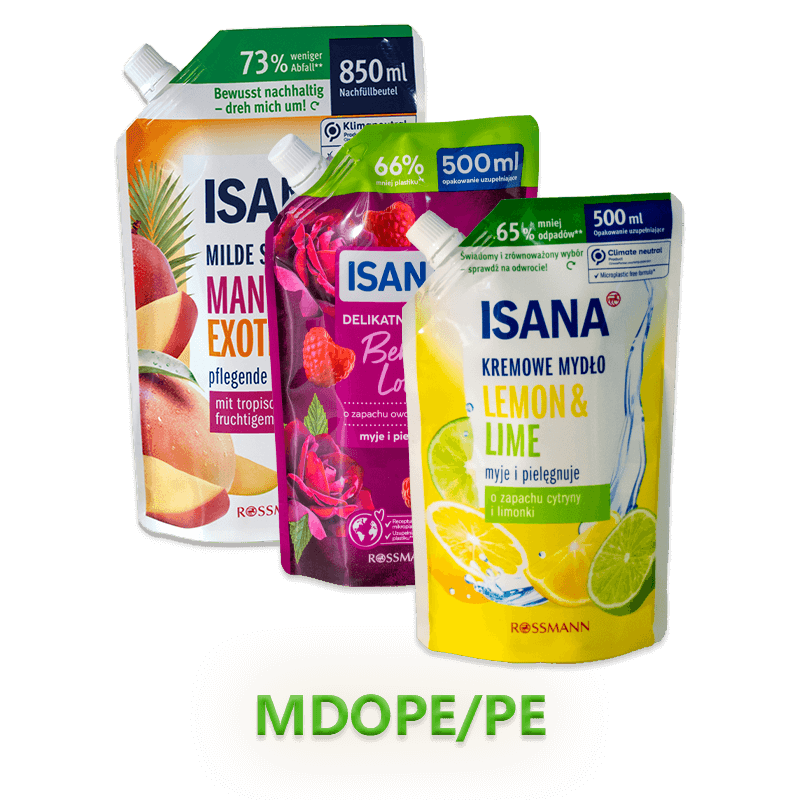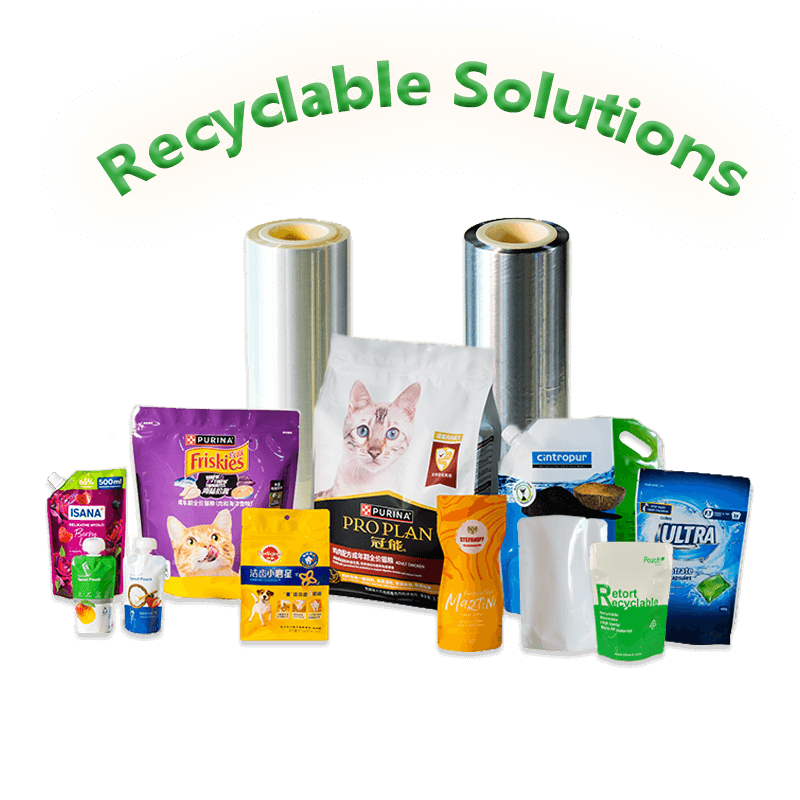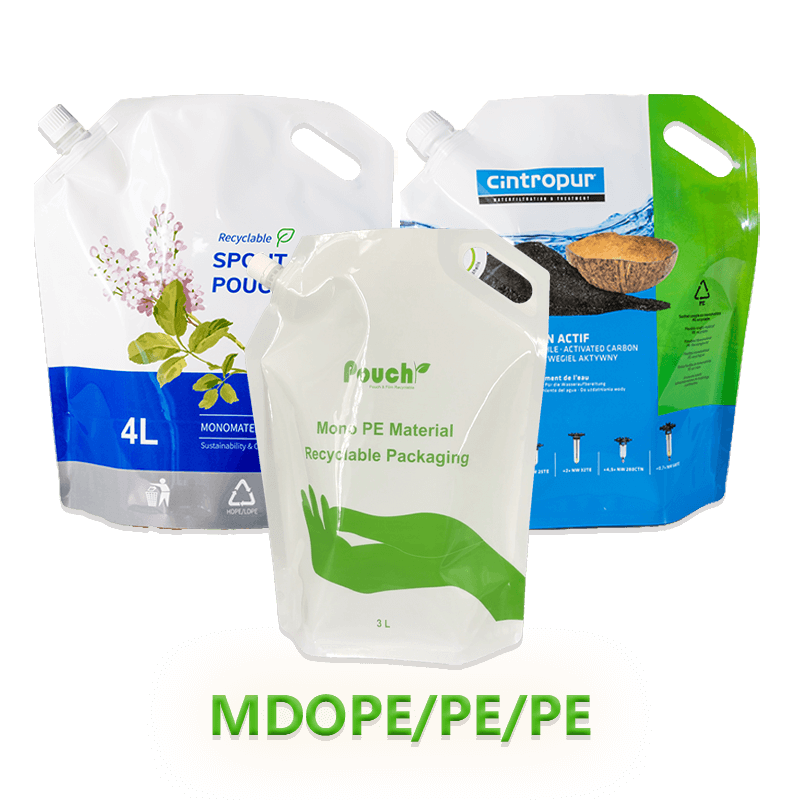Mono-material c composite is the inevitable path for environmentally friendly flexible packaging
As environmental concerns reshape every corner of the packaging industry, flexible packaging is undergoing a fundamental transformation. Among the most promising innovations is the rise of mono-material composite structures—a key advancement in making flexible packaging truly recyclable and sustainable.
In this article, we explore why mono-material packaging, especially structures like HDPE/CPE, are the future of eco-friendly flexible packaging, and how they align with both performance demands and circular economy goals.
🌱 Why Flexible Packaging Needs a Sustainable Revolution
Flexible packaging is favored for its light weight, durability, and low production cost. It's used across industries—from food and personal care to pharmaceuticals and chemicals. But its biggest drawback has always been its poor recyclability. Traditional multilayer structures (like PET/PE or PA/PE) are made from mixed materials, making them nearly impossible to separate and recycle efficiently.
This is where mono-material solutions offer a clear advantage.
♻️ What Is Mono-Material Flexible Packaging?
Mono-material packaging refers to packaging made entirely from a single type of polymer, such as polyethylene (PE). This makes the entire structure compatible with standard recycling streams and eliminates the need for manual or mechanical separation of layers.
One of the most successful examples is the HDPE/CPE composite, which offers high performance while remaining fully recyclable.
🧪 Why Stretch PE into HDPE (High-Density PE) for Flexible Films?
The key to making polyethylene competitive with traditional multi-material structures lies in stretching. When PE is stretched during production, it transforms into High-Barrier PE (HBPE), enhancing its physical properties:
- Thinner material, reducing raw material usage
- Higher strength, suitable for heavy packaging and detailed printing
- Increased stiffness, for a premium feel and better shelf presence
- Improved transparency, enhancing product visibility
This makes HBPE an ideal substrate for mono-material flexible packaging, without compromising performance.
💡 The Benefits of HDPE/CPE in Flexible Packaging
When designing next-generation flexible packaging, performance cannot be compromised for the sake of sustainability. Fortunately, HDPE/CPE mono-material composites offer both—delivering exceptional mechanical and functional properties while remaining fully recyclable. Below are two key benefits that make this structure a leading choice for eco-conscious, high-performance packaging.
🔥 1. Superior Heat Seal Strength
When it comes to sealing, CPE (Cast Polyethylene) outperforms many conventional materials. It starts sealing at a temperature 20°C lower than CPP (Cast Polypropylene), enabling high-speed packaging operations and reducing energy use.
CPE also provides:
- Excellent heat seal strength for leak prevention
- Anti-contamination sealing for powders, oils, and liquids
- Robustness for heavy-duty applications
✂️ 2. Easy Straight-Line Tearability
One of the standout features of the HBPE/CPE structure is its ability to tear cleanly in a straight line—without a notch. This user-friendly design:
- Reduces product damage during transport
- Enhances consumer convenience
- Improves packaging safety and shelf integrity
Traditional structures like PET/CPE or PA/CPE cannot achieve this level of tearability and often lack effective heat sealing properties, increasing the risk of leaks.
🚫 The Challenge with Pure PE: Barrier & Heat Resistance
While polyethylene is recyclable and water-resistant, it faces two limitations in flexible packaging:
- Limited oxygen and aroma barrier
- Moderate heat resistance
To solve these, advanced techniques are applied:
- PVA (Polyvinyl Alcohol) coatings, which provide excellent barrier properties
- Aluminum vapor deposition, for improved shelf life of sensitive contents
Moreover, PE's natural water resistance surpasses that of PET or nylon, making it particularly suitable for barrier enhancements like PVA.
✅ Why Mono-Material is the Future of Flexible Packaging
Mono-material flexible packaging structures offer the perfect balance between sustainability and performance:
| Feature | Traditional Multilayer | Mono-Material (HDPE/CPE) |
| Recyclability | Poor | Excellent |
| Heat Seal Strength | Medium | High |
| Barrier Potential | High (but not recyclable) | High with coatings |
| Production Speed | Moderate | High-speed compatible |
| Environmental Impact | High | Low |
By eliminating the need for layer separation, mono-material packaging simplifies the recycling process, reduces production complexity, and supports a circular economy model.
🌍 Final Thoughts: Innovation Meets Sustainability
As an industry veteran, I’ve seen many packaging trends come and go—but mono-material flexible packaging is here to stay. With innovations like HBPE/CPE composites, we now have a pathway that balances:
- Regulatory compliance
- Environmental responsibility
- Manufacturing efficiency
- Consumer convenience
To lead in tomorrow's sustainable world, brands must adopt solutions that are both functional and future-proof. And when it comes to flexible packaging, mono-material composites are not just a trend—they are the inevitable path forward.



